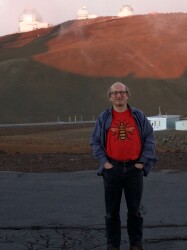BibTex format
@unpublished{Greenslade:2019,
author = {Greenslade, J and Aguilar, E and Clements, DL and Dannerbauer, H and Cheng, T and Petitpas, G and Yang, C and Messias, H and Oteo, I and Farrah, D and Michalowski, MJ and Fournon, IP and Aretxaga, I and Yun, MS and Eales, S and Dunne, L and Cooray, A and Andreani, P and Hughes, DH and Velazquez, M and Sanchez-Arguelles, D and Ponthieu, N},
publisher = {arXiv},
title = {A SCUBA-2 selected herschel-SPIRE dropout and the nature of this population},
url = {http://arxiv.org/abs/1910.03512v1},
year = {2019}
}

